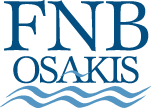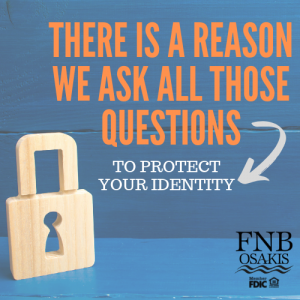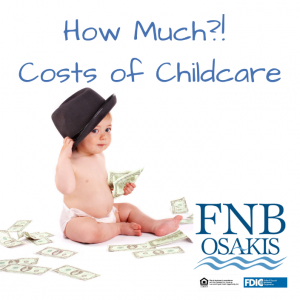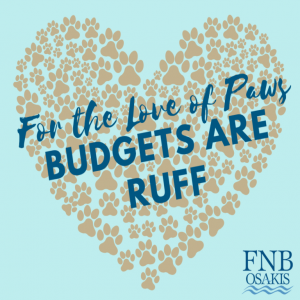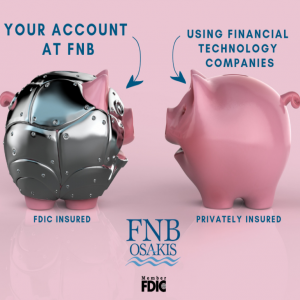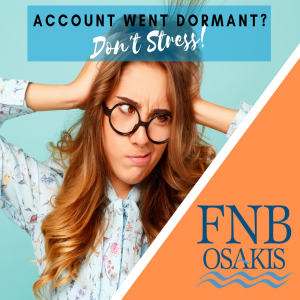“Tis the season,” tax return season, that is. The season where many large, consumer purchases are made possible with the down payment a tax return provides. It’s one thing to buy something outright, but increasingly more and more consumer spending is on items that require some level of financing. Getting a loan isn’t a bad thing, however, a hastily purchased and poorly thought-out transaction can be a very bad thing for your finances.
In many cases we take the time to think about what we would like to spend, but we tend to devalue future income spent—we don’t correctly quantify the total amount of future payments, interest, etc, we just look at the amount of the payment. With the importance of financing to drive sales of many higher priced goods, sales environments are increasingly more purposely set up to take advantage of this impulsive behavior, that Richard Thaler, Nobel Prize Winner, describes as ”Mental Accounting.”
The purpose of budgeting is to set our own expectations of how we should spend our money to accomplish our financial goals. The budget process places an importance of our own expectations, information gathering, and awareness of our impulsive nature to arm ourselves with the knowledge custom to our situations and how to be on offense when looking to make purchases. Dealer financing is EVERYWHERE – Homes, Car Dealerships, Furniture Stores, Cell-phones, rec vehicles, credit cards, without making a game plan, you’ll find yourself, and your budget, always on defense! Retailers aren’t going to sit down and work out your budget for you, they are going to run a credit report, and either approve or deny.
In order to make a rational decision, one that makes the most financial sense, a consumer needs full information. How often in a sales environment do you have full information? Do you know the mechanical history of the car, the total cost of the loan or lease over the duration of the contract, and the fees associated with the transaction (motor vehicle sales tax, tabs/registration cost for coming years, etc)? There’s so much information to be gathered that often in the heat of the moment, this information is ignored because we WANT that item and we simplify our economic decision-making to one very small piece of the puzzle—the payment.
It used to be that when you entered a store or dealership, the “how to purchase” and “can I afford this” questions were already answered. You have the money, or you are preapproved for a loan to buy it. Now, it’s likely that you know you want something, but you leave it up to the people benefiting from the transaction to help you figure out how to buy it. That’s where our own lack of information and irrationality lead to a potentially bad or costly decision.

The above table shows an example of a car purchase. The consumer currently owns a 2007 Honda Civic with no loan on it. The consumer is considering going with a newer Honda Civic, or moving to a pickup truck of a similar price. It’s becoming more common that a consumer walks into a dealership looking for a new vehicle and is presented options, eventually payment amounts based on the sales price, less a trade-in, and the loan over a certain amount of months. However, the table above shows there’s a considerable amount of other factors that hit the budget: Fuel cost, Insurance Cost, Maintenance, the Sales Cost (trade-in vs private sale), Taxes, and Registration. What appears to be a $240/month payment to purchase one of these vehicles, is actually anywhere from a $497 to $737/mo cost! To make a commitment of years on the spot, in the heat of the moment, based on limited information will wreak havoc on your budget!
Without full knowledge, we cannot be rational consumers. That is why it is important to step away from these transactions and acquire that knowledge to avoid the impulsive irrationality that many sales environments are either directly or indirectly encouraging. Come to the Bank, talk it over, and decide what the best course of action is. Or, at the very least, make that purchase days later, after you have had the time to analyze all the costs of the transaction, including the opportunity cost of dedicating a stream of income to an object that has very little value or less and less value the moment you purchase it.
By taking the time to understand what you want or need and what fits your budget, you are now on the offense to understand if something is a good deal for you. Consumers have never been hit with more ads, deals, etc than they are right now, and in very personal and subliminal ways. Are deals even deals anymore? Again, if you have a game plan—a budget—you’ve done your homework on the things you want to purchase. The following websites have handy information on the best times to buy items:
Consumer Reports – Best time to buy
Lifehacker – Best time to buy

You’ll notice that often the best time to buy something is when it isn’t in season. Winter clothes, the end of the winter. TVs-after the Super Bowl. Lawnmowers—right before winter. If you are planning ahead, this isn’t difficult to take advantage of. But, the dealers are betting you aren’t. And after that first snow, they set the price on what you pay for that snowblower, because you need it now, not in 5 months.
Finally, it sure is easy purchase things online, but there are many hidden costs to those transactions. Don’t chase those low online prices and in doing so devalue your time and the impact of spending your money locally. The time you spend to get a good deal, put together a product, and spend minutes—even hours—on the phone with customer service is a cost to you. Many times, in fact, most of the time, working with independent local businesses can save you time and stress. Local business owners stand behind their products and services, their business depends on your relationship, ensuring that consumers get what they need and problems get resolved quickly by people whom can actually make decisions. Additionally, spending your money locally contributes to community wealth that is returned to you in the forms of lower property taxes (better tax base), better amenities (schools, parks, etc), and future job opportunities with growing businesses!
Sources for info on Car Purchase
Fuelly – real MPG
Vehicle Registration Cost
Trade in value – Kelly Blue Book, can check with dealerships
Private Sale – internet listings, take about 5-10% off to get the value you could get. Can check local listings in publications, www.carsoup.com, www.autotrader.com, www.edmunds.com, Facebook Marketplace, www.craigslist.com.
Motor Vehicle Sales Tax – MN
Maintenance – Nerdwallet.com
Insurance—with your Agent on various models

